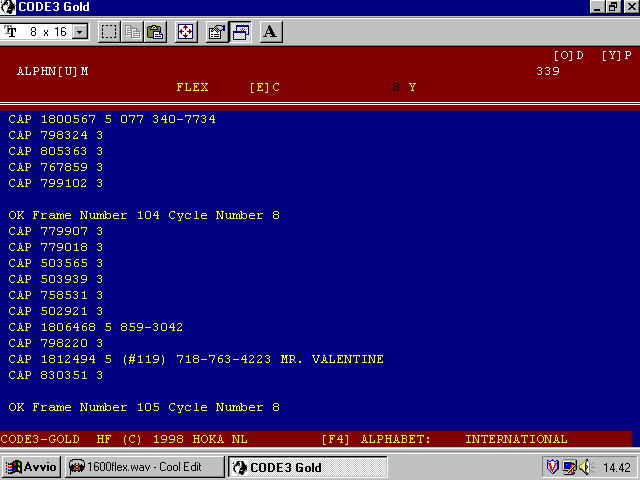Flex / RE-Flex

Flex / RE-Flex

FLEX operates as either a four level code or a two level code. The concept of a four level code is not new as other protocols have utilized four level transmission for quite some time. The modulation range of FLEX is plus and minus forty-eight hundred kilohertz of deviation. FLEX's four levels are defined as -4,800 hertz, -1,600 hertz, +1,600 hertz, and +4,800 hertz (referencing the operating frequency). Each level represents two bits in a given transmission. They represent `00', `01', `11', and `10' respectively.
Additionally, FLEX will adjust its bit rate based upon the channel loading. It can operate at 1,600, 3,200, and 6,400 bits per second. During times of peak traffic, FLEX will adjust its operating speed to the maximum bit rate of 6,400. During times of low traffic (such as the early morning hours), the bit rate will be adjusted to the minimum speed of 1,600 bits per second. During times of moderate traffic, the bit rate of 3,200 will be used. Additionally, FLEX can switch between four level and two level operation as needed.
The advantages of these flexibilities are to improve paging quality during times of low or reduced activity and increase channel capacity during times of high traffic. This allows maximum optimization of the medium as a function of loading.
Tolerance for errors in transmission are quite good considering that FLEX allows a quarter period error of the pulse duration. At a bit rate of 6,400 bits per second, FLEX will not miss a character during a fade of ten milliseconds or less.
